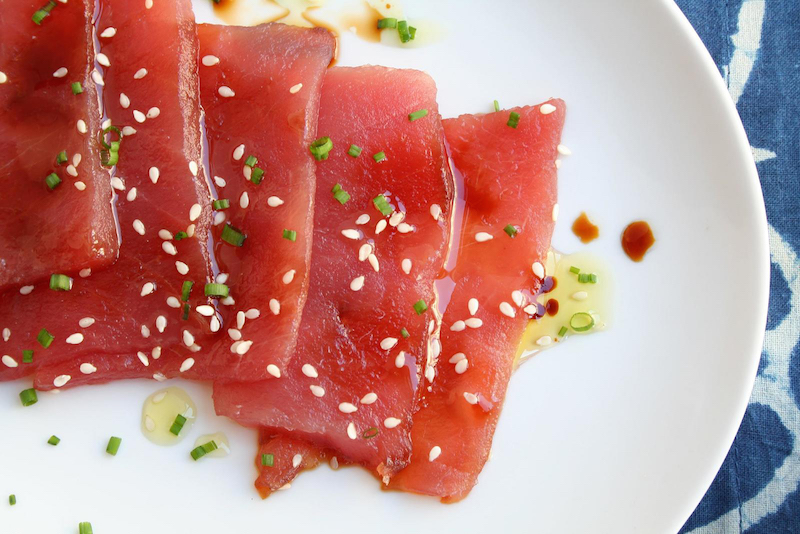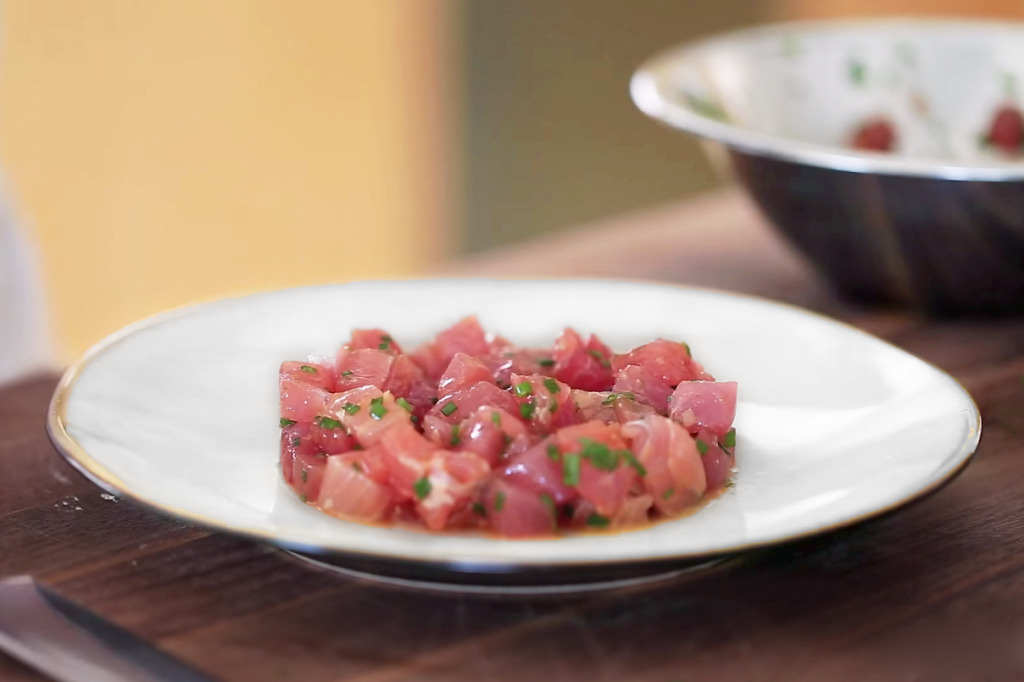So I get asked all the time: ‘Which types of fish can be eaten raw and do they have to be “sushi-grade?”‘ It’s a great question and I highly encourage doing your research any time it comes to preparing a new type of meat, fish, poultry, and so fourth. You can never be too safe—and in honor of #FishWeek I’m going to address the do’s and don’ts of buying and eating RAW fish.
The most common misconception is that only fish rated “sushi-grade” can be eaten raw and that’s not necessarily true. Starting with the most obvious question…
What is Sushi-Grade?
Put simply, “sushi-grade” is just a phrase, among several, thrown around to express the freshness of a fish. It is not, however, a regulated title; hence theoretically anything could be labeled “sushi-grade.” Typically that’s not the case and the title should be reserved for the vendor’s freshest fish that has been properly prepared and stored, but it’s important that you trust your vendor, or fish monger, and that you know what to look for when buying fish intended for raw consumption.
What to know?
Don’t be fooled by the freshness. Yes, it is true that only fresh fish should be consumed raw, as fish is highly perishable, but there are other standards and practices that need to be abided by to ensure a safe meal. The most important being, proper preparation.
Proper food and safety measures must be taken to minimize the risk of food-borne illnesses from eating raw fish. Your first concern should be sanitation and avoiding cross contamination. Ask you fish vendor how they avoid cross contamination. Is there “sushi-grade” fish prepared and kept separate from the fish that must be cooked? As in some fish—like types of Tuna—can often be eaten straight from the ocean, but other fish—like Salmon—can not be eaten raw unless it’s been properly treated. Therefor, you want to make sure the fish intended for raw consumption and the fish intended to be cooked have been prepared and stored separately to avoid any parasitic transfer.
That’s also why it’s important to know your fish. Parasitic fish, like Salmon, must be frozen first (roughly 7 days), thawed, and then can be served for raw consumption. This process is regulated. Every fish vendor should be able to provide you with a log of when the fish was caught, if, when and how long it was frozen for, and when it hit the shelves. That leads to my next point: know your vendor.
Where to buy?
I would only buy fish I intend to eat raw from a very trusted vender or fish monger. Only go somewhere that is reputable, has a high turn around—to guarantee freshness—and that comes with a knowledgable staff. Once you know where to shop, there are a plethora of unbelievably delicious RAW fish recipes. Whether you enjoy sushi, ceviche, sashimi, what have you—there are endless possibilities.
Hope you enjoy #FishWeek!






